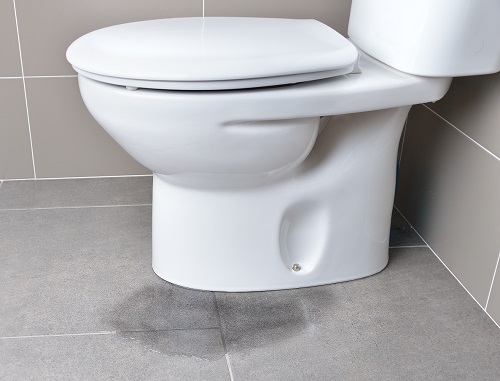DIY Dye Leak Test for Toilets

If you’ve ever had a leaky toilet, you know what a pain in the butt it can be. And the worst part is, you typically don’t know you have a leak until you get that unusually high water bill in the mail.
So, how can you identify leaks quickly and efficiently? Dye leak tests for toilets. You might have seen articles online about using food coloring to detect leaks in your toilet. This won’t work. You need specially formulated dye that is highly concentrated and intended to detect leaks.
What Type of Dye to Buy for a Toilet Leak Test
There are various types of tracer dyes available to consumers. You can invest in liquid dyes, powder dyes, tablets, and even waxes. But for toilets, the most common choice is tracer dye tablets.
Tracer dye tablets come in blue, red, yellow/green, and orange. For toilets, the best choices are probably red, blue, or orange, but any color should work. Tablet tracer dyes are environmentally friendly and a great solution for identifying toilet leaks while still contributing to water conversation. Since tablet dyes often work best for small volumes of water, they are ideal for toilets.
How to Perform a Dye Leak Test for Toilets
Once you have purchased your tracer dye tablets, you’re ready to perform your toilet leak test. Below are step-by-step instructions to ensure you get it right the first time and identify any leaks as soon as possible.
Step 1: Remove the toilet tank lid. Carefully remove the lid and lay it on the floor in a safe space where it will not get broken. Don’t worry if any condensation drips out as you remove the lid.
Step 2: Check the tank’s water level. If the water is sitting above the line indicated by the manufacturer on the inside of the tank, make any necessary adjustments to correct it. If you make any tweaks, reset the toilet by flushing it once and letting it refill.
Step 3: Drop a single dye tablet into the tank. Do not flush the toilet. Allow the tablet to dissolve in the water for 15 minutes.
Step 4: Check the toilet bowl for color. If you see any color from the dye tablet in your toilet bowl, there is a leak. Most likely, replacing the toilet’s flapper valve will solve the problem and stop your leak for good.
Believe it or not, one small leak in your toilet could be costing you on your monthly water bills. Getting the leak rectified will help you save money and conserve water in your home.
